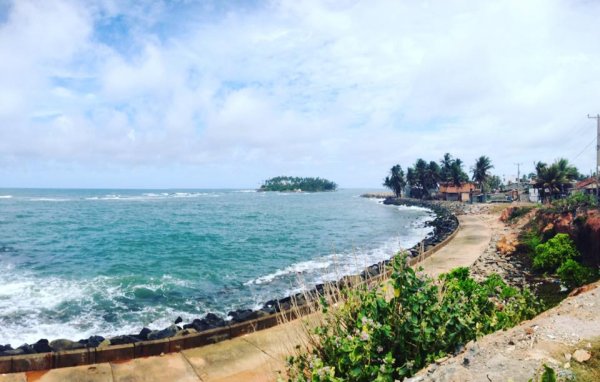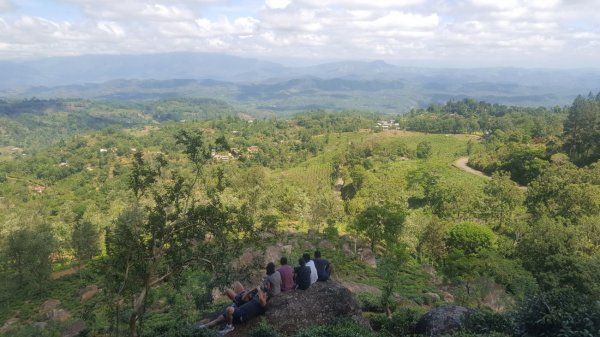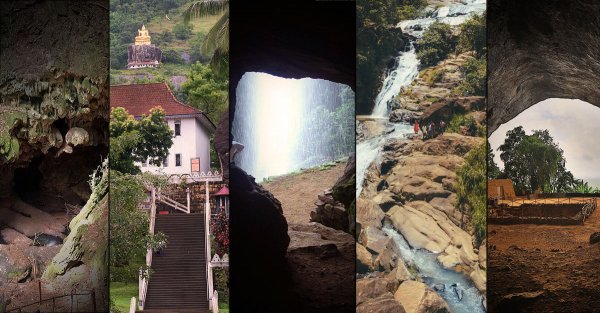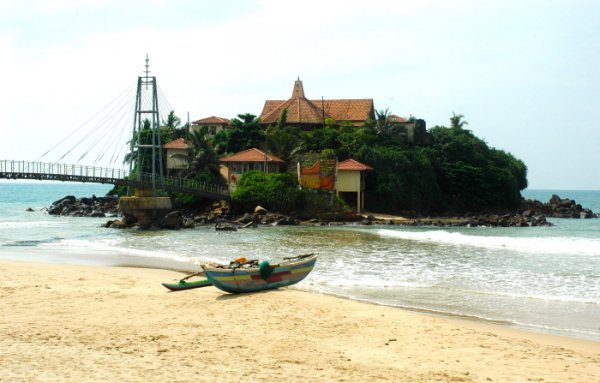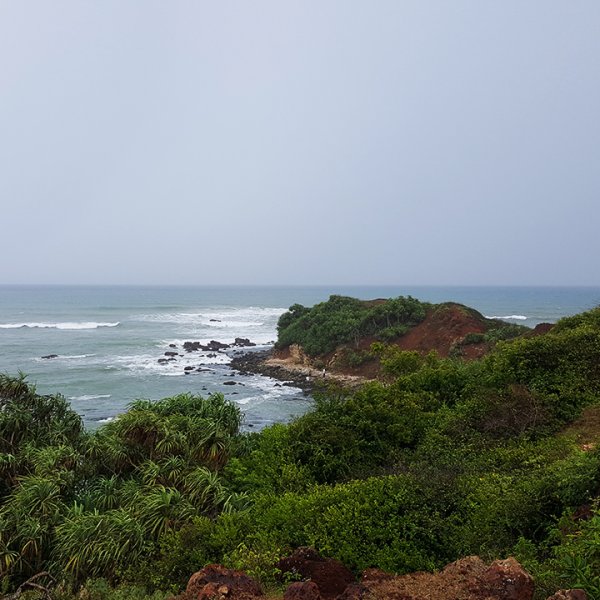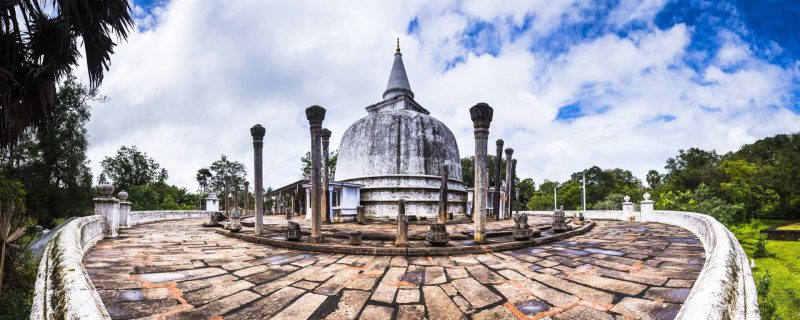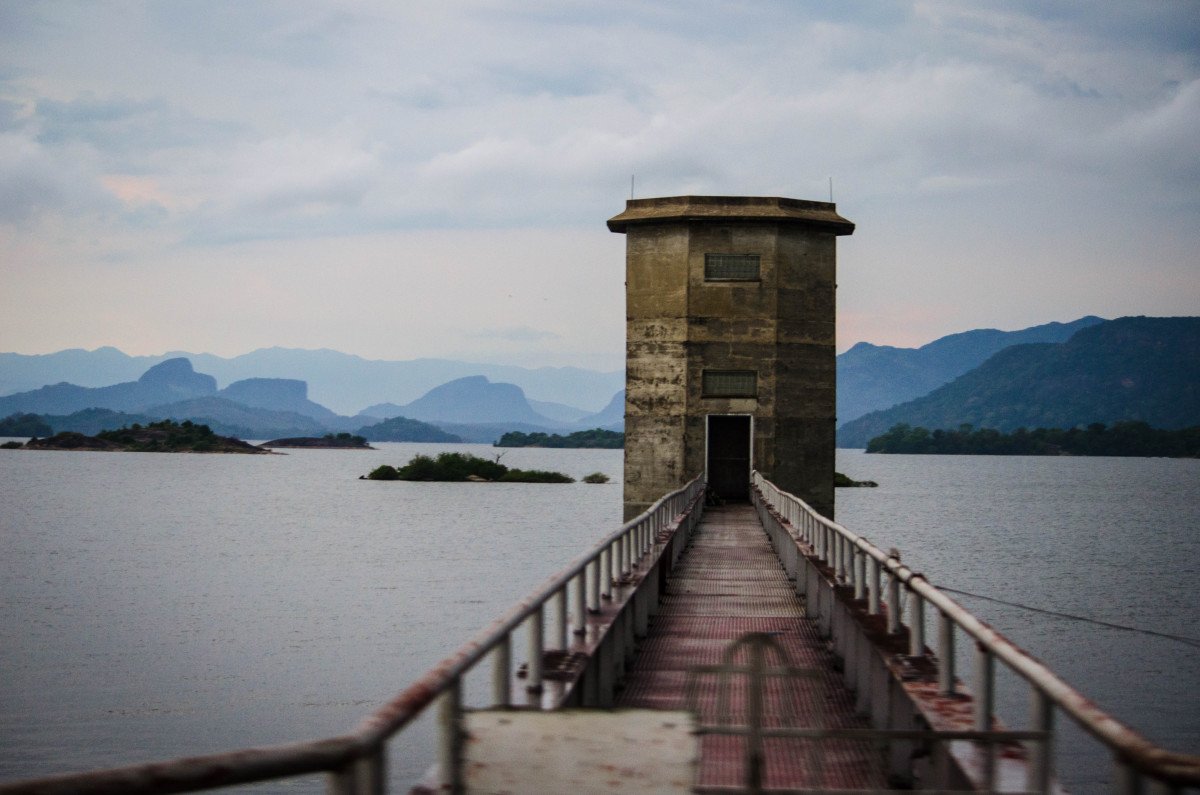
When it comes to nature reserves in Sri Lanka, Yala and Wilpattu get all the love, but there are a few lesser known reserves that we think deserve as much attention. Gal Oya National Park, located towards the southeast of the island, in Ampara, is one of them
While the park is said to be densely populated by notoriously aggressive sloth bears, and has a handful of leopards scattered throughout, spotting either of these beast in the forest can be difficult. According to the tracker who accompanied us, the bears and leopards are on the side of the mountain that is hard to reach by safari vehicles.
However, Gal Oya will far from disappoint the nature/adventure traveller. Elephant watching is what the park is best known for. These gentle giants can be spotted meandering through the tall grass of the park in the twilight hours. The park itself appears much like a cross between a savannah and a dry-zone jungle, which makes for some great wildlife photography; quite unlike the photographs you would snap at Yala or Wilpattu because the environment here is starkly different.
 A Sri Lankan elephant spotted at Gal Oya
A Sri Lankan elephant spotted at Gal Oya
Imagine shooting (in a photographic sense) elephants peeking over tall, luscious green grass, while the golden rays of the sun trickles in through the trees, forming patterns on the elephant’s leathery grey hide. If this sounds interesting to you, do read on, we will list out the different types of safaris and activities you can try out while visiting the park.
But first up, getting there!
From Colombo to Gal Oya
Not counting any stops,the drive to Gal Oya is almost 6 hours. Factor in a few breaks and bad roads, and you will probably reach there in roughly 8 hours. So it’s best that you set off early morning. Most of the routes cut through Kandy, and given typical Kandy traffic, that might set you back by a few hours. The route in blue that Google maps recommends is longer but less likely to have you shaking your fist at Kandy drivers and traffic police.
Most people seem to take the 18-hairpin-bends route that goes through Mahiyanganaya. While those hairpin bends are fascinating, we’d advise you against taking this route. The pay off in terms of time is just not worth it. What’s more, the roads are currently being widened and carpeted, and the construction makes it even worse. It might take them a year or so to complete the construction, and so, till then, we recommend the smoothly tarred, wide, and mind-blowingly scenic route that cuts through the Victoria- Randenigala – Rantembe Sanctuary.
Gal Oya: The Dos and the Sees
Gal Oya National Park Safari
 We highly recommended the safari
We highly recommended the safari
As mentioned, at Gal Oya it’s all about the elephants. Safaris are in the evenings; when the heat of the day has passed and cool evening breeze wafts through the forest, the elephants emerge, wandering closer to the safari trail.
Apart from the elephants you should be able to see spotted deer and quite a few different types of birds.
 The Black Headed Ibis
The Black Headed Ibis
You can bathe in the Makara river, but we recommend you do that earlier in the day. It’s much too cold in the evenings.
For the history buffs, you will be able to see the rocks used by Prince Dutugemunu to make a roadway for his army as they marched on to Annuradhapura to wage war on King Elara. The roadway no longer exists, but you can see smooth, rounded rocks strewn on the side of the road cleared for the safari vehicles.
 Makara River
Makara River
Unlike safaris in Yala and Wilpattu, you can get out of the safari vehicle and explore the jungle on foot. The tracker, who is from the Wildlife Department, will take you down to the Makara river, show you plants, birdlife and the rope ladder used by the Veddahs on a precarious climb on a rock to fetch honey.
Camping
Camping was not on our agenda, so we sadly missed out on this experience, but it is possible. There are about four camping sites at different locations in the sanctuary, each along the river that are great bathing spots.
 The Makara river, close to the camping site
The Makara river, close to the camping site
You will have to bring your own camping gear, food supplies, and paraffin burner (unless you prefer setting up your cooking fire with the dry wood in the jungle. All good). What the campsites do offer are toilets. We weren’t able to inspect them to give you a rating but at least they are there and it’s got to beat using a tree for cover as you answer nature’s call.
Once you get to the reserve, ask the Wildlife Department folk about the camping sites and about getting there.
On the subject of camping, you can also camp on the islands in the Senanayake samudraya. Or so we were told. You can find out if this is possible at the Wildlife Department office located there.
Boat Safari
The boat safari is on the Senanayake Samudraya, which is about 40km, give or take, from the Gal Oya National park. It’s got its own Wildlife Department office, from where you can hire your boat. Be sure to buy your entrance tickets and pick up the two trackers (one for steering the boat) at the main Wildlife Department office a few Kilometres ahead (you should pass it before reaching the Senanayake Samudraya).
The best time for the boat safari would be either in the morning or early evening. The birds and elephants prefer the cooler hours of the day.
We spotted quite a few water birds on the safari, such as the black headed Ibis, grey herons, little egrets, intermediate egrets, thick knees, the Indian cormorant, and a brahminy kite.
Most of the birds were on an island that’s a common feeding and breeding ground. It’s an impressive sight to see hundreds of various types of water birds in one location.
You can also have a picnic on one of the islands. Bring your own picnic food and mat, and ask the trackers to take you to one of the islands.
Meet the Veddahs
Our trek was with the Veddah chief of Rathugala tribe Danigala Mahabandaralage Sudha Wanni Aththo, who is 51 years old and has two kids. His kids, who attend a local school, aren’t interested in being Veddahs, and he says they are likely to become famers. It’s not surprising given that the Veddah lifestyle has become harder. The Chief says that most of the animals have moved away from their regular hunting ground so they live and eat much like the rest of the villagers in the area.
With only 80 Veddah families remaining, there’s a good chance that his generation will be the last of the Rathugala Veddahs. All the more reason to take the tour/trek with him.
He will show you medicinal plants along the way, how the animal traps they have work, visit the caves his grandfathers lived in and more. It’s a great tour, with lots of insight into a dying culture which we’ve written about previously.
Since it isn’t one of the more popular national parks, Gal Oya isn’t as well equipped in providing safari vehicles or has the best routes. There’s a lot more work that needs to be done to match up with Wilpattu or Yala, but for now, what makes Gal Oya better than the two popular national parks is that it isn’t swarming with tourists. It’s an excellent getaway – from the city, technology (there are no mobile signals in this area) and people. And of course, elephants in a different setting.


 The Veddah Chief
The Veddah Chief
